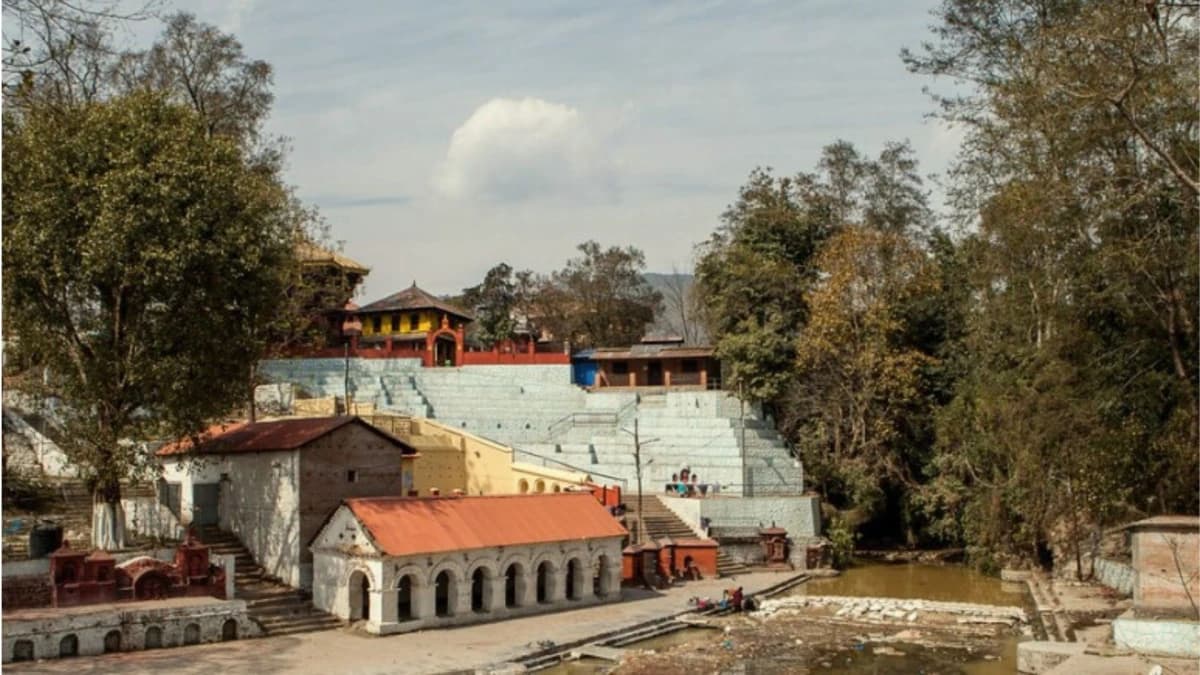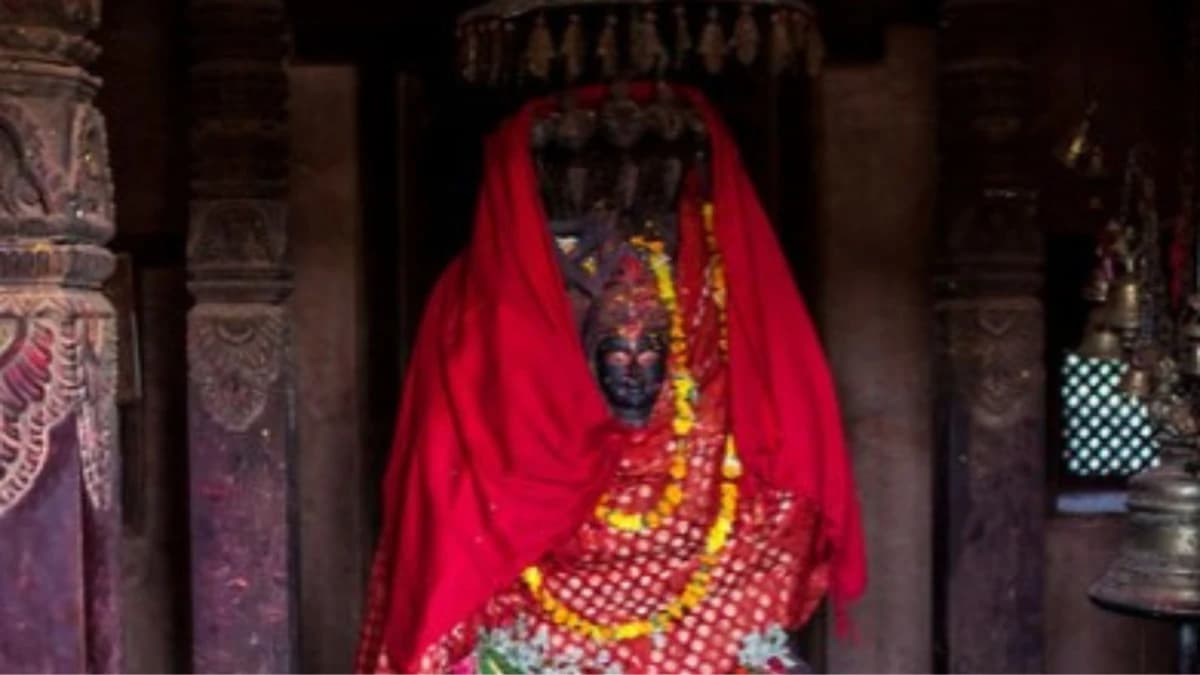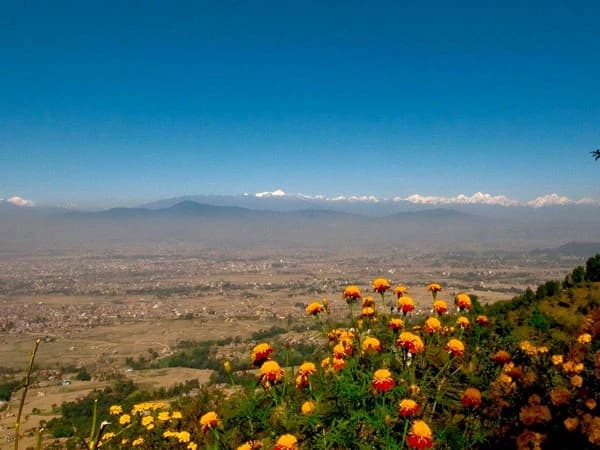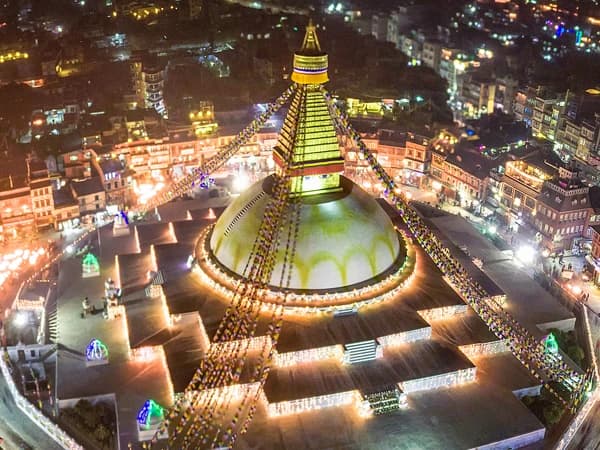Nestled in Tranquility: Sali Nadi Temple, Sankhu
Having a backdrop of the peaceful hills of Sankhu, the Sali Nadi Temple stands like not only a sacred place but like a living evidence of age-old faith, folklore, and the spirit of community that enshrines Nepal as a cultural identity. A trip here allows tourists to forget the bustle. Using this visit, the tourists can leave the fast-paced city of Kathmandu and enter into the relaxing pace of rural life where these ancient rites still run through the rocks and depths of the Sali River.
Deeper Historical and Mythological Roots
The Sali Nadi Temple has strong links with the Swasthani Brata Katha, which is one of the most valued Hindu scriptures of Nepal. These stories form the basis of the month-long Swasthani Brata festival, which (generally going by the Hindu calendar year) is observed between Poush Shukla Purnima and Magh Shukla Purnima (roughly January to February). Legend has it that Goddess Swasthani, another form of Parvati, emerged to make the desires of her devotees come true, and she taught them to make their wishes come true through the discipline of devotion and penance. It is said that the very river itself brings the merits of her visit, and as such, pilgrims dip in the chilly water of the river to get rid of sins and to gain spiritual value.
The temple precincts are full of legends in ancient atonement. Folklores talk of how Lord shiva disguised as a deer did his penance here, and how they say how Goddess Parvati used to recite the story of Swasthani Brata on the banks of this river. These stories associate the site with the Hindu culture as a whole which combines nature adoration, sacredness of rivers and feminine deity.
Rituals, Festivals, and Community Life
Even though the most important period to understand the spiritual power of the temple is during the Swasthani Brata Puja, the Sali Nadi Temple in general is an active place of worship not only during that period. Families come together to pray on auspicious days, couples solicit prayers to ensure a successful marital life, and women fast for the welfare of their loved ones.
In the month of the festival, Sankhu becomes a vibrant pilgrimage town. The worshippers, who are predominantly women, look forward to the dawn ceremony of worship when they visit the riverside to bathe in groups after offering rice, flowers, betel nuts, and oil lamps to the temple. Swasthani Brata Katha recitations can be heard in houses and courtyards, linking the families together with recitation and prayer. Encouraging stalls run throughout the local markets with garlands, sacred threads, incense, and traditional sweets. This intermingling of religion and the festivities of the village provides visitors with a window to the soul of the Nepalese village world.
Architectural Highlights and Local Craftsmanship
Sali Nadi Temple complex is one of the finest examples of Newari temple architecture, where intricate woodwork has been created with pagoda-like multi-tiered roofs and heavily carved struts that are carved with different deities, mythological creatures, and references to the religious texts. What attracts the visitors is the well-carved doorways, bronze bells, and oil lamps of generations of worshippers. Stone lingams and small shrines give modest accounts along the riverbank of daily devotion and faith.
In addition to the temple on the way beyond the village of Sankhu, we can find yet another set of cultural treasures of the ancient town. Alleys and lanes are surrounded by centuries-old houses with finely carved windows, shared courtyards, old water spouts, and old traditional rest houses where pilgrims and travellers used to find rest in transit.
The Journey: How to Reach and Explore
The approach to the Sali Nadi Temple is easy. The village of Sankhu is about 17 kilometers northeast of Kathmandu, where the journey normally takes 45 minutes to one hour. The most comfortable motor vehicle available is a private car, or a taxi, another alternative is the local buses at Ratna Park or Koteshwor. Pine forest and terrace farmland, a beautiful countryside on the hike, is shown through the view along the various hiking trails, which either start at Sundarijal or Gokarna up to Sankhu, a place that is serene to the eye.
There is no perfect time to visit, and the choice will depend on what you hope to feel. During the Swasthani Brata festival, you will have a chance to visit the temple at the most festive time and also the most pious. During the off-festival months when fewer people are attending the temple and village, it is easier to think, take a stroll, and use the camera as well.
What to Expect on a Sali Nadi One-Day Tour
Most people who visit Sali Nadi for a well-prepared day trip start their journey off with a tour of the rural settlements and the rolling hills of Kathmandu Valley. A tour usually begins with a tour guide walking through Sankhu, with these major insights of Newari old houses, full streets, and traditional stores. When they visit the temple, tourists get to know about the myths and rituals of the place with the help of the local priest or a guide in the field. Others might prefer to take part in simple offerings, or, as they may prefer, to dip symbolically into the river.
The tour may also involve taking a small trek around the nearby hills of Sankhu where one gets panoramic images of the terraced land and a view of the far extending Himalaya. A lot of tourists mix this cultural tour with having a bite at the local tea house or a small restaurant in order to taste some local snacks, drinking some warm tea or coffee.
Why Include Sali Nadi in Your Kathmandu Itinerary
The place is quiet as compared to the overpopulated heritage sites in the city, giving tourists an excellent opportunity to see the unadulterated traditions and communal living of the rural Nepalese. It is a great source of information concerning the way the ancient texts and everyday life are still linked to the background using ritual and oral narration. The leisureliness of the Sali River, cerulean stillness of the Sankhu architecture, and the friendliness of its men and women are the real hallmarks of this day excursion, which is also a deep exploration of the culture there.
Tips for Visitors
Vacationers are advised to dress more decently so as not to tempt the temple environment with bare shoulders and knees. You might wish to know that there are crowds and rituals observed during Swasthani Brata, so you might want to watch quietly, and when you are willing to have people photographed or in situations, ask first. Winters may be chilly, especially early in the morning by the river, and it is advisable to wear warm clothes. Eating tea in a village teashop or buying offerings from the local vendor is a considerate action that will help the local economy. A local guide is advisable (where it is possible) as it will improve the journey with impressions, some historical background, and many other things that can be overlooked in case you are simply a tourist.
A Journey to Remember
It is not just a brief trip to the Sali Nadi Temple but also the chance to enter the spiritual world of Nepal, hear the tales that have passed through the generations, and find a few moments of meditation with the sacred river. If you want to see another side of the Kathmandu Valley, a day-long tour is a combination of cultural richness, natural beauty, and human contact that would last longer when you leave Sankhu covered in the back of your mind.







